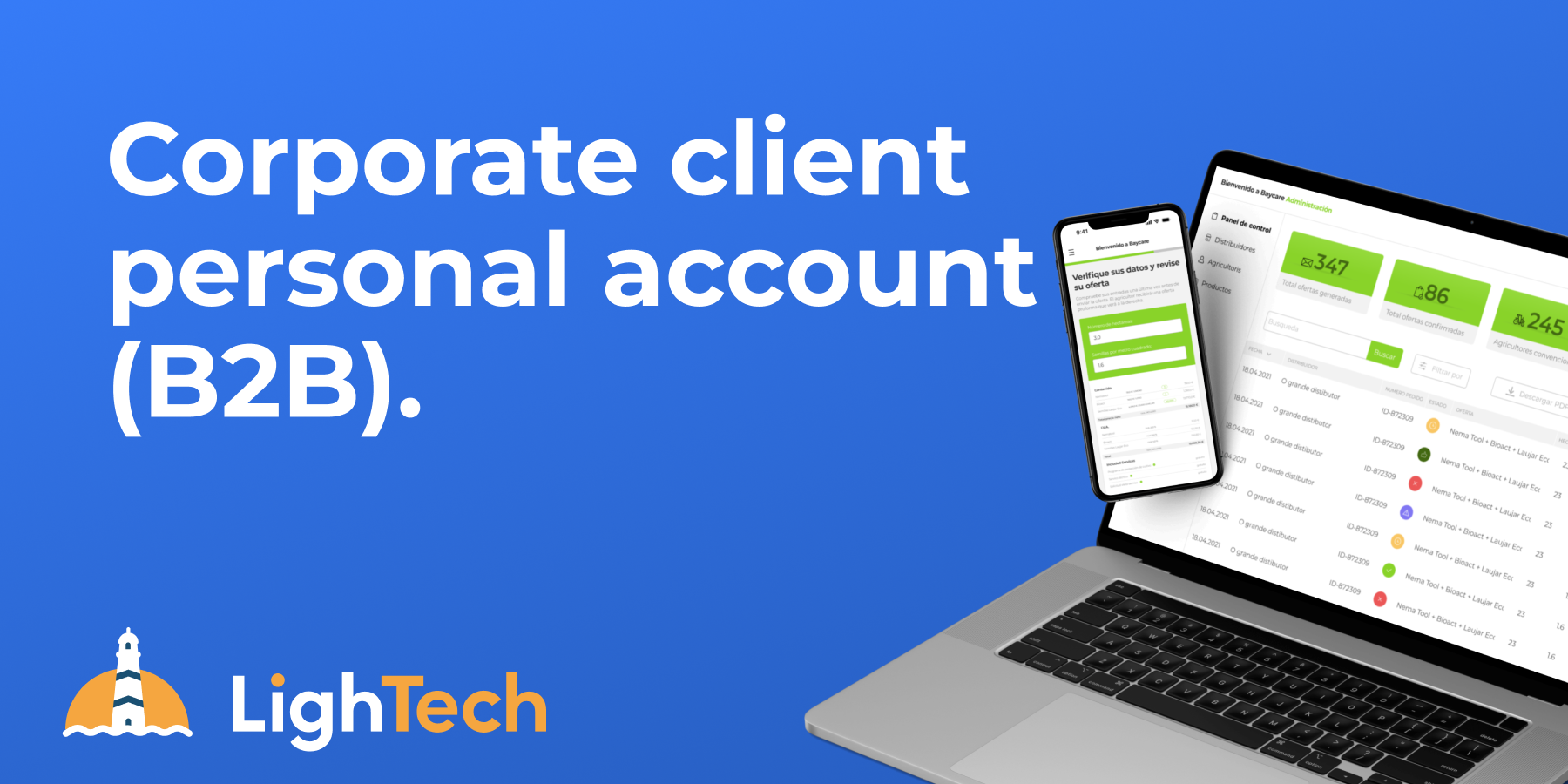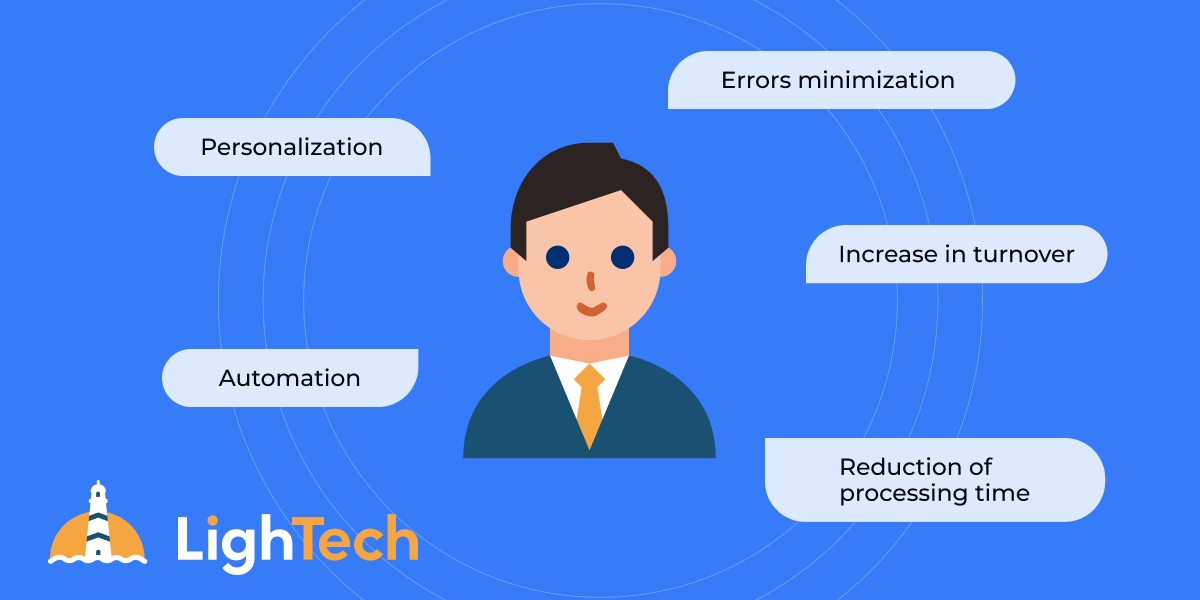
A B2B client portal can streamline business processes and enhance customer interactions, offering real-time access to crucial data on orders, products, and pricing. This makes it easier for companies to manage transactions efficiently and effectively.
As market competition intensifies, having a B2B client portal isn’t just a competitive edge — it’s a necessity for success. This tool transforms your website and significantly improves customer service.
A B2B client portal is a secure, personalized page on your company’s website that provides clients with access to information and tools for managing their orders.
On this page, customers can find:
This portal allows clients to manage their orders, access personal data, and automate interactions with managers. It should feature an easy-to-use interface, intuitive “smart search,” and documentation exchange capabilities.
The portal should provide current data on stock levels, prices, and transaction stages in one window, making order management transparent and straightforward. Minimizing routine interactions with managers is key, prompting clients to contact them only when necessary.
Such features enhance service efficiency and client satisfaction, accumulating valuable data for informed decision-making. It establishes a “everything at your fingertips” cloud storage concept for users.
Implementing a B2B client portal brings numerous business advantages:

In an IT ecosystem for a leading fuel trader, the client portal offered a unified knowledge base, integration with electronic documentation, an analytical dashboard, procurement automation, logistics cost calculations, stage-based notifications, a loyalty program, and real-time wagon tracking.
Results included:
The system showcased scalability for new regions and allowed revenue diversification through a logistics aggregator business model. Key success factors were understanding the length of the IT system implementation, KPI integration, SMART goal-setting during analysis, and iterative development with regular feedback.
Key differences in client engagement include:
These features make B2B portals more functional and adaptable to business needs than B2C products.
The principal advantage is enhanced interaction with suppliers and optimized business task performance.
How it works:
Business process optimization in a B2B portal results from automating routine tasks and providing current information on products, prices, and stock levels, making interactions with suppliers more efficient and effective.
Different B2B portals cater to specific roles in the supply chain.
|
Portal Type |
Suitable For |
Description & Benefits |
|
Distributor Portal |
Product Manufacturers |
Manage inventory, track sales through distributors, and access analytics and reports for supply chain optimization. |
|
Dealer Portal |
Distributors |
Simplify procurement and interactions with manufacturers through order management, custom pricing, and document handling. |
|
Corporate Client Portal |
Retail Companies |
Easily place orders, track statuses, and access product information with potential for integrating custom conditions and prices. |
Each portal type offers unique features tailored to the user’s role, with distributors accessing sales information and dealers customizing prices based on purchase volumes.
Key development steps and their descriptions are as follows:
|
Development Stage |
Description |
Example |
|
Identifying Users’ Needs |
Define target audiences and their needs to create a valuable product. |
A B2B portal for eye clinics included a version for visually impaired users to improve accessibility. |
|
Business Process Analysis |
Create BPMN diagrams for current and desired processes to identify issues and improvements. |
A pharmaceutical marketplace considered local features like letter direction during process analysis. |
|
Interface Design |
Develop clickable prototypes in Figma for early user testing and interface improvement. |
Gamification and animated design were added to enhance engagement in an online school portal. |
|
Development |
Code the portal functions with a focus on quality and requirements adherence. |
Develop order management functionalities and integrate with accounting systems. |
|
Testing |
Test standard and non-standard cases to uncover errors before launch. |
Test scenarios such as system performance under high loads. |
|
Implementation |
Prepare user manuals and training materials to reduce post-launch inquiries. |
Provide video tutorials and textual guides for quick learning of the new interface. |
Effective development begins with understanding user needs, like creating a version for visually impaired users in an eye clinic project.
Business process analysis using BPMN diagrams identifies problems and improvement opportunities, such as local considerations in a pharmaceutical project.
Designing in Figma for early user testing improves the user experience.
Development and testing must consider complex scenarios to ensure system reliability. The implementation phase includes preparing guides and videos for user assimilation.
Poorly organized catalogs without comparison capabilities can make it difficult for users to find and evaluate products quickly.
Solution: Develop a user-friendly catalog interface with filters by categories, prices, and attributes, plus product comparison functions.
A convoluted order process with lengthy forms can deter clients, lowering conversions and causing frustration.
Solution: Simplify order placement, minimize steps and fields, use auto-fill for addresses, save data for future purchases, and enable single-screen order completion.
Limited payment methods can hinder sales.
Solution: Integrate popular payment systems, including credit cards, e-wallets, and bank transfers, offering users convenient choices.
Lack of delivery time information or lengthy delivery periods can discourage purchases and erode company trust.
Solution: Provide transparent delivery information, real-time order tracking, and optimize logistics to shorten delivery times.
The LightTech offers all the competencies needed for successful B2B client portal development.
Their advantages include extensive experience in B2B projects, a professional team, and a flexible development approach. Their expertise in modern technologies enables the creation of advanced solutions integrated with clients' existing systems.
To learn more about how LightTech can assist your business, review our case studies on our website and request an initial audit today.